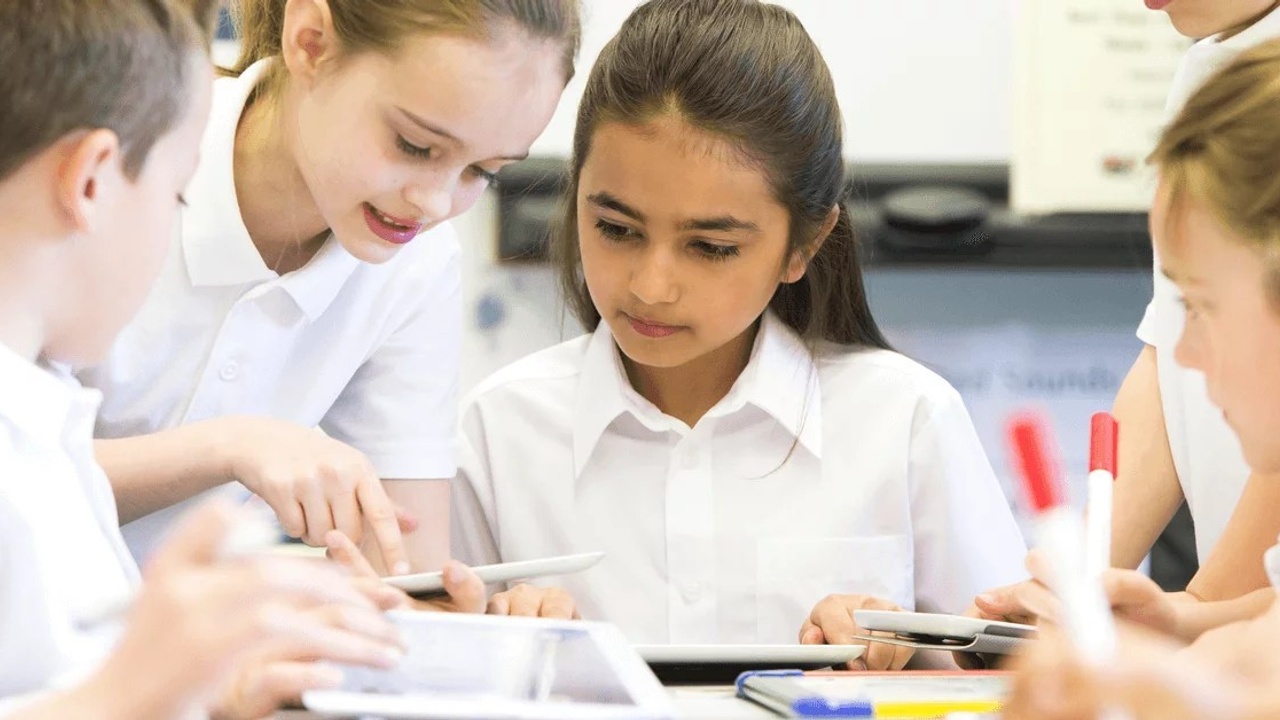RETHINK CLASS TIME — NEVER LECTURE IN CLASS AGAIN

For my first 19 years as a teacher I was a committed lecturer and probably spent 60% of my class time doing whole group “teaching.” I honed my craft. I had some standard jokes. I spiced it up with cool demonstrations in my chemistry class. Most of my students seemed to pay attention. They took notes, they asked questions, and they seemed engaged. But were they? Did I really reach every student teaching that way? In retrospect, I didn’t.
Today, I don’t lecture in class anymore. In fact, I haven’t given a whole-class lecture since 2007. How did I do that? What do I do instead?
This article is one in a series where we will discuss how you can make mastery learning a reality. I will share how I, and thousands of other teachers, have transformed classrooms into a place where every student succeeds. In my previous article, we learned about what happens in mastery classrooms. This article will focus on No Whole-Class Direct Instruction.
The heart of a Flipped Mastery classroom is one simple question: “What is the best use of face-to-face class time?” I would argue that it is students working on complex things (whatever that looks like in your class) in the presence of their teacher.
And the way that I answer the above question is with a negative — I know that the best use of my class time is NOT information transfer. Instead, class time needs to be a time where students are engaging with the lesson. They need to be working together. I need to be free to work with small groups of students. Some groups are more remedial where others are challenging and helping students make deep connections. It looks like experiments; it looks like small group tutoring. It looks like exploration. It looks like relationship building. And I could never go back to teaching as that guy who stands up and lectures.
And in a mastery classroom where students will be at slightly different parts of the curriculum at different times, it is crucial that I time-shift direct instruction. If I had to do whole-group direct instruction, those students who are ahead would be bored, and those who are behind would be lost.
So in order to make mastery learning work, it is essential that any direct instruction is on a digital platform that students can access just when they need it. To that end, my direct instruction takes the form of a combination of both video and text that students interact with when they are working independently. I actually give my students the choice of watching my science videos or reading the textbook. I find that most choose the videos.
Also notice that I say no whole-class instruction. I don’t refer to it as no direct instruction. I know that students don’t know what they don’t know and I, as an expert in my field, know the curriculum. Thus, I believe that while there is a place for direct instruction, it is just not during whole-class instruction. In my experience working with thousands of teachers across every content area, there is almost always some direct instruction necessary. Certainly, in my science courses, I see this need. When I am solving a physics or chemistry problem, I know students need to see me modeling how to solve that problem so that they can solve unique problems. Perhaps you are teaching kindergartners how to read. At some point, someone has to show them how to make the long A sound or how to make the letter T.
Independent vs Group Space
In a Flipped-Mastery course two key terms are used to help organize courses: Independent and Group Spaces. Independent Space is where students work alone, or independently. This often happens outside of class (homework), but can also happen in class. Independent Space work should focus on lower levels of Bloom’s taxonomy where students are introduced to the lesson material. These either take the form of a short video or a short reading assignment. These are also sometimes called pre-learning assignments.
The group space is where students synchronously master more difficult concepts. They usually do this in small groups and this time is characterized by active learning methodologies. This article won’t focus on that aspect — stay tuned for a later article which will address this topic.
Pre-Learning Options & Best Practices
Students are introduced to the content via a video or a reading. If it is a video, then you can either create your own video or use one available online. Alternatively, you can assign reading from either a textbook or from some other reading source. The key here is to use the pre-learning activity which connects to the in-class learning. Make sure there is a direct connection. If you are teaching fingering and chording in a guitar class, then have students working on fingering and chording in class. If you are teaching students how to identify alliteration in a poem, have them analyzing poetry and looking for alliteration in class.
Make the Pre-Work Social: Another best practice is to make the pre-work social. Students learn best when they learn socially, and there are now tools where students can socially read and watch videos asynchronously. The tool I am currently using is Perusall. When students read on this platform, they can highlight text and then make comments on each other’s comments. The same tool does the same thing with videos. The tool is powered by artificial intelligence and it evaluates the quality of student comments and produces a confusion report. I have found this tool to be super helpful for myself because it gives me a view into student misconceptions and struggles before they ever come into class. An added benefit is that students will answer each other’s questions right in the platform.
Shorter is Better: When I first flipped my class, my videos were way too long. Now the pre-work is in bite-sized chunks. One topic per pre-learning lesson. If I have a more complex topic I will make it into multiple parts. For my high school students, my videos are between five–12 minutes each. Shorter is better.
Benefits of Pre-Work for Mastery
My videos have essentially multiplied me. I’m not tied to teaching all students on the same day about a specific topic. And that freedom allows me to do the most important work as a teacher. I roam about the room helping students, having formative discussions, connecting relationally, and joining my students in the adventure of learning together.
I know you still have questions: Especially questions about logistics. How are mastery teachers doing this with 30 kids in a class and six classes a day? Hang in there. More to come.
Additional Resources
- Podcast: I am starting both a video and audio podcast that focuses on Mastery Learning with my two daughters, Kaitie and Emily, who teach English and Science respectively. The podcast is entitled Chalkboard Stories. Find more at jonbergmann.com
- Community: I have just launched a community section on my website https://jonbergmann.com/Community and you can create an account and connect there about mastery learning.
- Book: The second half of my book Flip Your Classroom: Reaching Every Student in Every Class Every Day focuses on the Flipped-Mastery Model
Note: This article was first posted at Intrepid Ed where Jon is a columnist.
Jon's created several courses that will help you in the age of AI. Each short course will help you become a better teacher.
